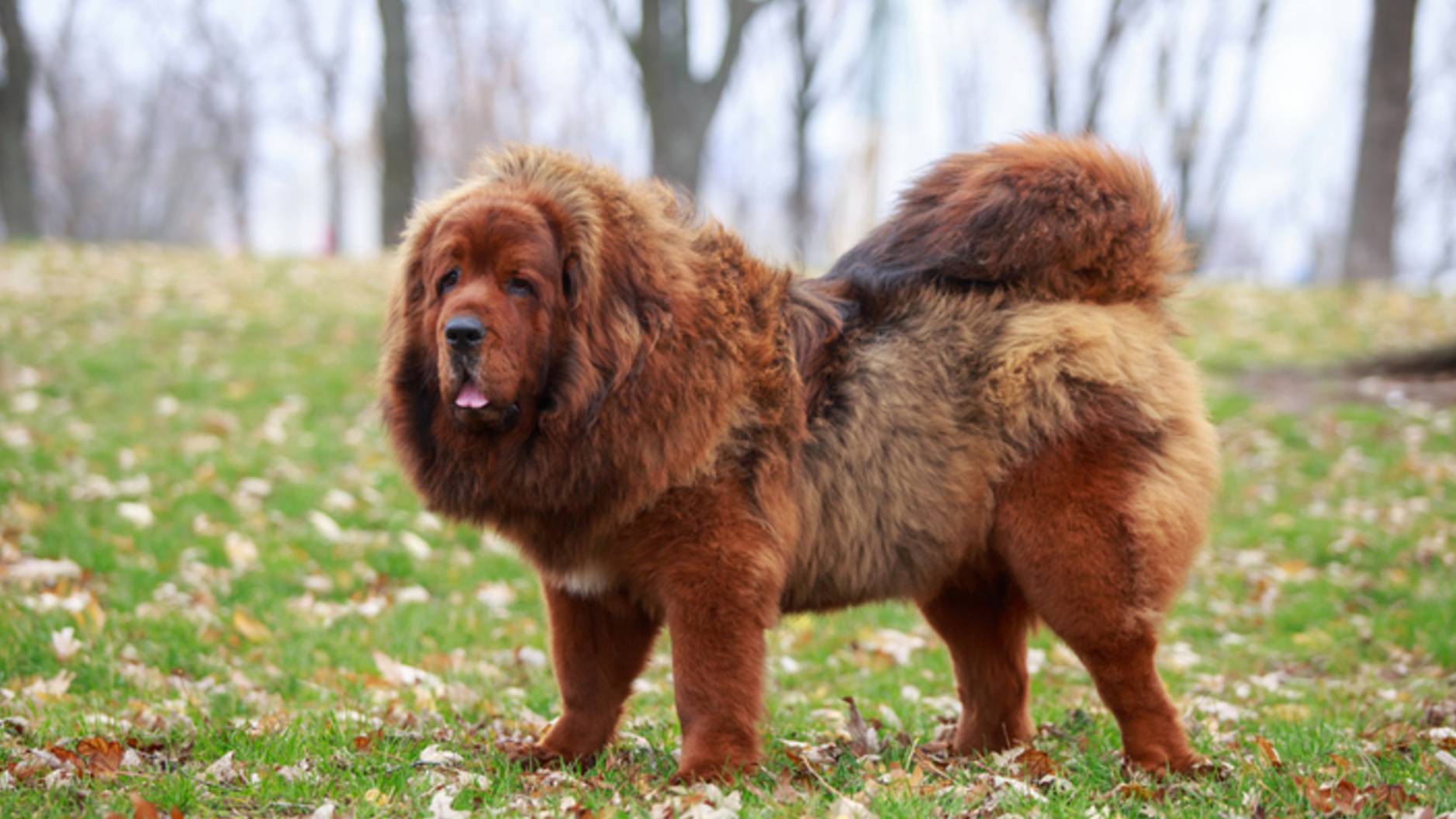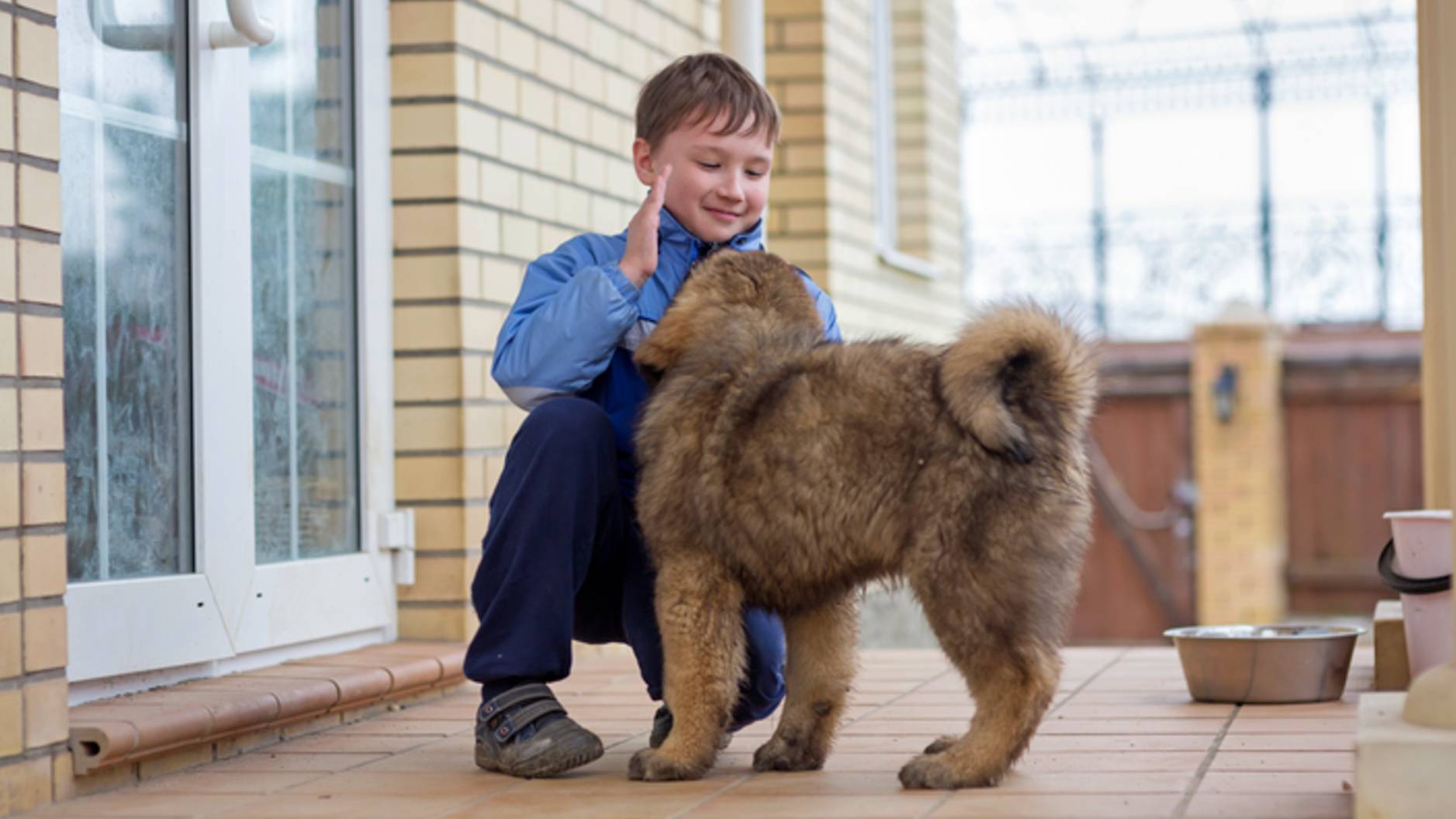Tibetan Mastiff: Breed Profile
Our Tibetan Mastiff breed profile will help you determine if these giant guardians are a good dog for you

If you're considering a fluffy giant, then this Tibetan Mastiff breed profile is the perfect place to start. Tibetan Mastiffs are technically not a Mastiff breed, but more of a mountain dog breed, but the name has been around since it was bred as a flock guardian in the Himalayas.
They are a fairly rare dog breed and competed in the Westminster Kennel Club Dog Show for the first time in 2008.
Tibetan Mastiffs are comfortable living in high altitudes and have thick coats that keep them warm in the snow and other wintry conditions. They are hard workers and family protectors who will guard you and your children, but that does mean they can be a bit stubborn!
If you're considering bringing a Tibetan Mastiff into your home, look for ways to adopt, if possible. Do your research to make sure these big Asian dogs are a good fit for your living quarters, lifestyle, and more – which you can start doing right here with our Tibetan Mastiff breed profile.
How much exercise does a Tibetan Mastiff need?
Life expectancy: 11-14 years
Average weight: 75-125lbs
About the same as: Gym punchbag
Exercise level: Medium
Tibetan Mastiffs are a large dog breed, but their exercise requirements can be met with a nice long, on-leash walk or a solid 20-30 minute romp in an outdoor yard. A smaller yard isn't sufficient enough for a Tibetan Mastiff, as a big dog needs some big space.
Keep in mind that Tibetan Mastiffs have incredibly heavy coats meant to keep them warm in the mountains, so having a Tibetan Mastiff in hot, humid climates isn't a good idea, especially when they are exercising. Tibetan Mastiffs tolerate dry heat better than humid heat, but make sure they always have shade and fresh water when they're outside.
Tibetan Mastiffs enjoy having dog playmates, so you might consider another dog to keep their exercise levels up.
Get the best advice, tips and top tech for your beloved Pets
Are Tibetan Mastiffs easy to train?
Suitable for: Patient, experienced dog owners who can provide consistent training
Not suitable for: Time-poor and inexperienced owners who don't have a lot of space or inclination to train
Temperament: Independent, stubborn, gentle
Shedding: Low
Tibetan Mastiffs can be difficult dogs to train, especially for inexperienced dog owners. They are a highly intelligent breed and learn quickly, but they can be incredibly stubborn and can follow their instincts over training instructions.
They aren't particularly driven by food so you can't use traditional treat training as a way to garner obedience. They are also infamous for doing well in training class and then conveniently forgetting their commands once they get home. Tibetan Mastiffs typically don't have a reliable recall and can't be trusted off leash.
Are Tibetan Mastiffs good with kids?

Tibetan Mastiffs are watchdogs and will protect any children it is raised with. It's important to socialize your Tibetan Mastiff from a young age so that it doesn't lean into any guarding instincts and become overly suspicious of strangers, as that may mean they aren't great with any new children that come over for playdates.
If you socialize your Tibetan Mastiff from a young age, however, they are incredibly gentle and patient with children. It's just as important to teach your kids how to behave around dogs, as well, so that they know what is and isn't appropriate when handling a large dog like the Tibetan Mastiff.
Again, Tibetan Mastiffs are gentle and protective of children with whom it is familiar but can tend to be more guarded around new kids, so socialize the dog young.
What do Tibetan Mastiffs eat?
Tibetan Mastiffs are quite large, so they need enough calories to stay healthy, but not too much that they become overweight. Tibetan Mastiffs eat less than you'd expect for their size, with adults consuming around two to four cups of food a day. Despite their huge size, Tibetan Mastiffs are known to even skip a meal, as they tend to only eat when hungry.
As with any dog breed, Tibetan Mastiffs should get high-quality dog food that is appropriate for their age and weight. That means puppy food when they are puppies and adult food based on their weight as they continue to grow.
Tibetan Mastiffs don't usually require any special diets, but if in doubt, consult your veterinarian for the best dog food for this breed.
Do Tibetan Mastiffs bark a lot?
Tibetan Mastiffs are guard dogs, so it's no surprise they have a deep, booming bark – and they aren't afraid to use it to alert you. Tibetan Mastiffs are especially attentive at night, so be prepared to hear a loud, booming bark during the quiet hours.
If you let them outside to go to the bathroom at night, expect them to bark a lot, which could irritate your neighbors. If you live in an apartment complex or a tightly packed suburban area, the Tibetan Mastiff might not be the dog for you if you want to keep your neighbors happy.
Are Tibetan Mastiffs aggressive?

Tibetan Mastiffs are not open to strangers and are territorial animals – they are guard dogs, after all. They are patient and gentle with people they are familiar with but can be aggressive or attempt to guard you against someone they consider a stranger.
To avoid this kind of behavior happening long into adulthood, make sure to socialize your Tibetan Mastiff from puppyhood. They can do well with children if they're raised alongside them, but may not enjoy other kids, as loud noises can overwhelm them.
As a result, they aren't recommended for homes with young children, but they do not tend to show signs of aggression in dogs.
Do Tibetan Mastiffs shed a lot?
Amount of shedding: Low, except for once yearly coat 'blowing'
Easy to groom: Yes
General health: Good
Potential for weight gain: Low
Despite their big fluffy coat, Tibetan Mastiffs are pretty easy to groom. They are double-coated, with a heavy undercoat and a coarse topcoat, both of which are low-maintenance and require little grooming throughout the year. Brushing your Tibetan Mastiff weekly should be enough to get rid of any tangles or dirt.
Tibetan Mastiffs shed their undercoat once a year, usually around late spring/early summer, so that they aren't too hot in the warmer months. When this is happening, it's best to use a de-shedding tool or an undercoat rake.
Wisdom Panel Breed Discovery DNA Kit | Amazon
Not sure exactly what breed your dog is? This kit screens for 365+ breeds – because knowing every detail about your dog helps you understand how best to care for them.
Tibetan Mastiff health problems
Tibetan Mastiffs are a relatively healthy breed, especially if they are obtained from a responsible breeder who screens for health issues. They can be prone to elbow and hip dysplasia, eye issues, and hypothyroidism, so make sure to screen for these with your vet.
Should I get a Tibetan Mastiff?
If you are an experienced, patient owner with plenty of yard space, the Tibetan Mastiff might be a good fit for you. They need consistency with their training and exposure to children, so if you have young kids that aren't well-behaved around dogs, you may want to reconsider.
Tibetan Mastiffs can be gentle, loving, kind breeds that enjoy your company but aren't needy. They would make great companions for anyone who likes to go out on long walks in the morning or at night, or people who have large properties. They won't do well in a tiny apartment.
If you're looking for a gentle giant that will guard you and your family, the Tibetan Mastiff may just be the dog for you. If you're considering getting one, avoid getting your dog from a puppy mill or pet store.
Look for reputable breeders or rescues if at all possible. And remember that, just like any other pet, the Tibetan Mastiff is a companion for life.
You might also enjoy learning about the English Mastiff or the bullmastiff

Ashleigh is Digital Editor on PetsRadar. With over 8 years of experience in print and digital media, she has acted as an editorial lead on a variety of projects, with animal themes a keen interest. As an avid animal lover, you can often find Ashleigh checking out the newest trends in animal care or looking at cute cat videos on TikTok.

